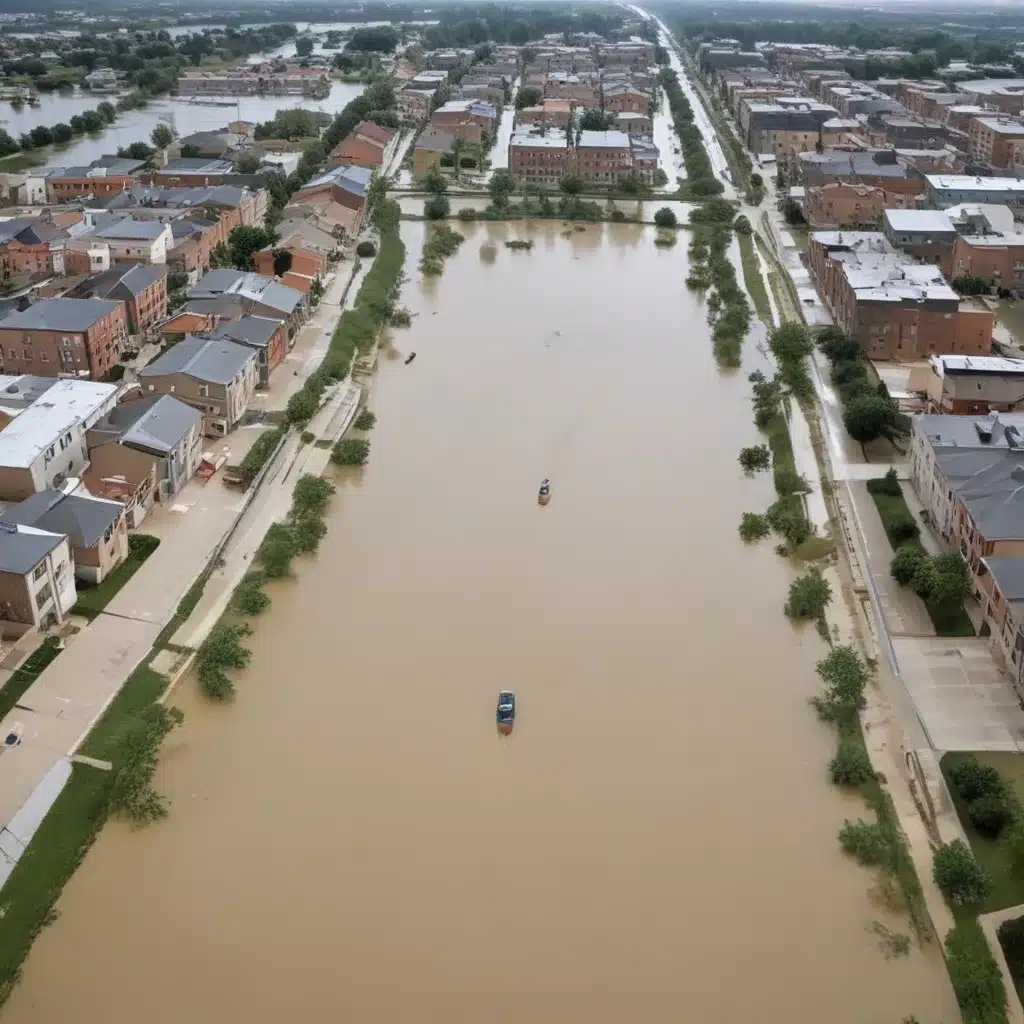
As our cities continue to grow and evolve, the threat of devastating floods has become an increasingly pressing concern. Rapid urbanization, aging infrastructure, and the far-reaching impacts of climate change have all contributed to making urban areas more vulnerable to water-related disasters. However, a new wave of innovative flood control technologies is emerging to help communities enhance their resilience and mitigate the risks posed by flooding.
Now, this might seem counterintuitive…
Flood Risk and Vulnerability Assessments
Effective flood management starts with a thorough understanding of the risks faced by a particular urban environment. Hydrological modeling and forecasting techniques utilize advanced data analysis and predictive algorithms to anticipate the frequency, severity, and potential impacts of flood events. By integrating historical records, real-time monitoring data, and climate change projections, these models provide a comprehensive view of a city’s flood vulnerability.
Complementing this hydrological analysis, flood hazard mapping employs cutting-edge geospatial technologies like LiDAR and geographic information systems (GIS) to visualize flood-prone areas. These high-resolution maps identify critical infrastructure, population centers, and other assets at risk, enabling urban planners and emergency managers to prioritize mitigation efforts. As the effects of climate change continue to intensify, regularly updating these flood risk assessments is crucial to anticipating future challenges and adapting strategies accordingly.
Structural Flood Control Measures
In addition to data-driven risk analysis, urban environments require robust physical infrastructure to withstand and manage flood events. Levee and floodwall design plays a critical role in protecting vulnerable areas, with engineers constantly innovating to enhance the strength, durability, and adaptability of these structures. Strategically placed detention and retention basins serve as temporary storage for excess floodwaters, reducing the burden on drainage systems and mitigating the immediate impacts of flooding. Complementing these flood control measures, pumping station infrastructure ensures that when water does accumulate, it can be efficiently removed and redirected to safer areas.
Nonstructural Flood Mitigation Strategies
While physical flood control measures are essential, urban environments might want to also adopt a comprehensive approach that includes nonstructural strategies. Zoning and land use regulations can restrict development in high-risk areas, preventing the concentration of people and assets in vulnerable locations. Likewise, building code requirements for flood-resistant construction techniques and materials safeguard individual structures against inundation. Additionally, flood insurance programs provide a critical safety net for residents and businesses, ensuring their financial resilience in the aftermath of a flood event.
Stormwater Management Systems
Effectively managing stormwater is a crucial component of urban flood control. Green infrastructure solutions, such as permeable pavements, rain gardens, and green roofs, mimic natural hydrological processes by allowing water to infiltrate and be absorbed on-site, reducing the burden on traditional drainage networks. Complementing these nature-based approaches, urban drainage networks featuring strategically placed culverts, channels, and underground storage systems double-check that that excess water is efficiently conveyed away from populated areas. Underpinning these stormwater management strategies, sustainable drainage practices like water harvesting and groundwater recharge promote the long-term resilience of urban water systems.
Emergency Flood Response and Preparedness
Even with comprehensive flood control measures in place, urban environments might want to also be equipped to respond effectively when disaster strikes. Early warning systems that leverage advanced sensors, predictive analytics, and real-time monitoring provide critical situational awareness, allowing authorities and residents to take proactive steps to mitigate the immediate impacts of a flood event. Robust evacuation planning and coordination ensures that vulnerable populations can be safely moved to higher ground or sheltered in place when necessary. Additionally, well-developed post-flood recovery efforts help communities bounce back more quickly, restoring essential services and infrastructure.
Integrated Water Resource Management
Achieving true flood resilience in urban environments requires a holistic, watershed-scale approach to water resource management. By understanding the surface water and groundwater interactions within a given region, engineers and planners can devise multifunctional flood control strategies that address the interconnected nature of the hydrological cycle. Watershed-scale flood control approaches incorporate natural features like wetlands and floodplains, as well as engineered solutions, to manage water holistically and minimize the risk of downstream impacts. This integrated water resource management mindset ensures that flood control efforts are aligned with broader sustainability and environmental objectives, creating more livable and resilient cities.
Innovative Flood Control Technologies
As urban environments continue to face evolving flood threats, a new generation of innovative flood control technologies is emerging to enhance resilience and adapt to changing conditions. Sensing and monitoring systems equipped with advanced sensors and data analytics provide real-time, hyper-local insights into water levels, precipitation patterns, and other critical indicators, enabling proactive flood management. Complementing this data-driven approach, predictive analytics and modeling leverage artificial intelligence and machine learning to anticipate the timing, severity, and impacts of flood events, informing decision-making and emergency response efforts.
Moreover, automated control and decision support systems can autonomously adjust flood control infrastructure, such as gates, valves, and pumps, in response to changing conditions, optimizing water flow and storage to prevent overloading of drainage systems. These cutting-edge technologies, when integrated into a comprehensive flood management strategy, empower urban communities to become more resilient, responsive, and adaptable in the face of increasingly unpredictable weather patterns and flood risks.
As urban populations continue to grow and climate change intensifies, the need for innovative and comprehensive flood control solutions has never been more pressing. By leveraging a combination of advanced risk assessment, structural and nonstructural mitigation strategies, stormwater management best practices, and emerging technological tools, Flood Control 2015 is helping urban communities around the world enhance their resilience and safeguard their residents, infrastructure, and economic well-being against the devastating impacts of flooding.
Tip: Implement real-time monitoring to swiftly respond to flood risks















